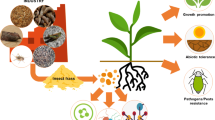Summary
Free-living nematodes may be attacked and eaten by soil mites which are normally considered fungivores or saprophages. Three species in the genus Tyrophagus, common inhabitants of grassland soils and also common pests in stored products, museums and laboratories, are predators of nematodes. All active stages of the mites will voraciously consume nematodes. When offered nematodes and a choice of other food (baker's yeast and algae), 11% of the Tyrophagus putrescentiae, 23% of the T. zachvatkini, and 56% of the T. similis tested fed on nematodes. Tyrophagus zechvatkini and similis were reared on a diet consisting entirely of nematodes, and developed at rates similar to a fungal diet and produced viable offspring. Agar cultures of Aphelenchus avenae which were inoculated with five mating pairs of Tyrophagus zachvatkini had populations that were one-third less than mite-free controls. Observations indicate that nematodes may be attacked by tyrophagid mites when in a dry, anhydrobiotic state.
Similar content being viewed by others
References
Abbatiello MJ (1965) A culture chamber for rearing soil mites. Turtox News 43:162–163
Coleman DC (1986) The role of microfloral and microfaunal interactions in affecting soil processes. In: Microflora and microfaunal interactions in natural ecosystems, Mitchell MJ, Nakas JP (eds). Martinus Nijhoff/Dr. W. Junk, Boston, pp 317–329
Coleman DC, McGinnis JT (1970) Quantification of fungus-small arthropod food chains in the soil. Oikos 21:134–137
Crossley DC, Merchant (1971) Feeding by caeculid mites on fungus demonstrated with radioactive tracers. Ann Ent Soc Amer 64:760–762
Crowe JH, Madin KAC (1975) Anhydrobiosis in nematodes: evaporative water loss and survival. J Exp Zool 193:323–334
Freckman DW, Whitford WG, Steinberger Y (1986) Effects off irrigation on nematode population dynamics and activity in desert soils. Biol Fert Soils (in press)
Herzberg MA, Klein DA, Coleman DC (1978) Trophic interactions in soils as they affect energy and nutrient dynamics. II Physiological responses of selected rhizosphere bacteria. Micro Ecology 4:351–359
Hughes AM (1976) The mites of stored food and houses. Minist Agric Fish Food Tech Bull No 9, London, 400 pp
Hunt HW, Coleman DC, Ingham ER, Ingham RE, Elliot ET, Moore JC, Rose SL, Reid CPP, Morley C (1986) The detrital food web in a shortgrass prairie. Biol Fert Soil (in press)
Imbriani JL, Mankau R (1983) Studies on Lasioseius scapulatus, a mesostigmatid mite predaceous on nematodes. J Nematol 15:523–528
Ingham RE, Trofymow JA, Ingham ER, Coleman DC (1985) Interactions of bacteria, fungi, and their nematode grazers: Effects on nutrient cycling and plant growth. Ecol Monog 55:119–140
Kamburov SS (1971) Feeding, development, and reproduction of Amblyseius largoensis on various food substances. J Econ Ent 64:643–648
Kevan DK, Sharma GD (1963) The effects of low temperature on Tyrophagus putrescentiae. In: Advances in acarology, Naegele J (ed), Vol I. Comstock Publ, Ithaca, NY, pp 112–130
Krantz GW (1978) A manual of acarology. Oregon State Univ Bookstores, Corvallis, 509 pp
Leetham NJ, Milchunas DG (1985) The composition and distribution of soil microarthropods in the shortgrass steppe in relation to soil water, root biomass, and grazing by cattle. Pedobiologia 28:311–325
Luxton M (1981) Studies on the astigmatid mites of a Danis beech wood soil. Pedobiologia 22:29–38
Luxton M, Petersen H (1982) Survey of the main animal taxa of the detritus food web. Oikos 39:293–294
Moser JC (1975) Mite predators of the southern pine beetle. Ann Ent Soc Am 68:1113–1116
Muraoka M, Ishibasi N (1976) Nematode-feeding mites and their feeding behaviour. Appl Ent Zool 11:1–7
O'Connor BM (1982) Evolutionary ecology of astigmatid mites. Ann Rev Ent 27:385–409
Petersen H (1982) Structure and size of soil animal populations. Oikos 39:306–329
Pimm SL (1982) Food webs. Chapman and Hall, New York, 219 pp
Rockett CL (1980) Nematode predation by oribatid mites (Acari: Oribatida). Internat J Acarol 6:219–224
Rivard I (1961) The influence of temperature and humidity on longevity, fecundity, and rate of increase of the mite Tyrophagus putrescentiae (Schrank) (Acarina: Acaridae) reared on mold cultures. Can J Zool 39:869–876
Robertson PL (1959) A revision of the genus Tyrophagus, with a discussion on its taxonomic position in the Acarina. Aust J Zool 7:146–181
Santos PF, Whitford WG (1981) The effects of microarthropods on litter decomposition in a Chihuahuan desert ecosystem. Ecology 62:654–663
Seethaler H, Knulle W, Devine TI (1979) Water vapor intake and body water (3HOH) clearance in the housemite Glycyphagus domesticus. Acarologia 21:442–450
Sohlenius B (1980) Abundance, biomass and contribution to energy flow by soil nematodes in terrestrial ecosytems. Oikos 34:186–194
Sokal RR, Rohlf FJ (1972) Introduction to biostatistics. Freeman, San Francisco, 368 pp
Walter DE, Kethley J, Moore JC (1986) Extraction efficiency and biomass estimation of prairie soil microarthropods. Pedobiologia (in press)
Wharton GW, Duke KM, Epstein HM (1979) Water and the physiology of house dust mites In: Recent advances in acarology, Rodriguez JG (ed) Vol I. Academic Press, New York, pp 325–335
Whelan J (1985) Seasonal fluctuations and vertical distribution of the acarine fauna of three grassland sites. Pedobiologia 28:191–201
Whitford WG, Freckman DW, Elkins NZ, Parker LW, Parmalee R, Phillips J, Tucker S (1981) Diurnal migration and responses to simulated rainfall in desert soil microarthropods and nematodes. Soil Biol Biochem 13:417–425
Whitford WG, Steinberger Y, MacKay W, Parker LW, Freckman DW, Wallwork JA, Weems D (1986) Rainfall and decomposition in the Chihuahuan desert. Oecologia (Berlin) 68:512–515
Author information
Authors and Affiliations
Rights and permissions
About this article
Cite this article
Walter, D.E., Hudgens, R.A. & Freckman, D.W. Consumption of nematodes by fungivorous mites, Tyrophagus spp. (Acarina: Astigmata: Acaridae). Oecologia 70, 357–361 (1986). https://doi.org/10.1007/BF00379497
Received:
Issue Date:
DOI: https://doi.org/10.1007/BF00379497




